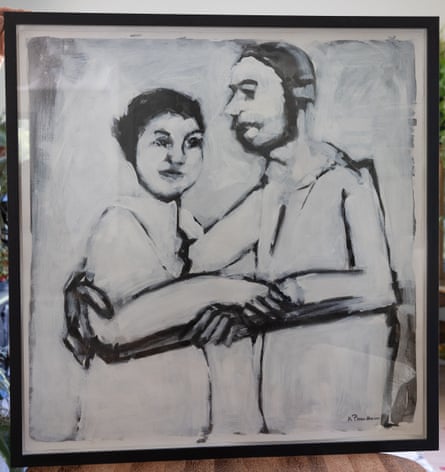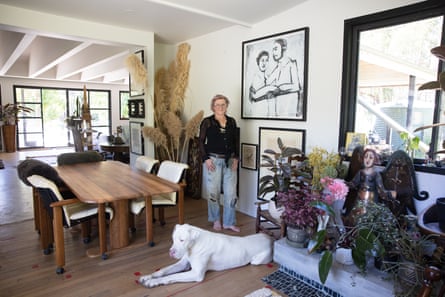
The theologian Cath McKinney first encountered Brother Patrick Henigan at a community congregation in Melbourne’s inner-north decades ago. “He was one of those people that was very little and in that way he was quite big,” she says. “He was just very able to be present and see people.”
She had no idea at the time that she would go on to acquire several of Henigan’s paintings, or that others would be held by major cultural institutions, including the National Gallery of Australia and National Gallery of Victoria.
Henigan, who died in 2018 at the age of 93, took up painting in his 50s. He lived many lives: as an artist, a Franciscan friar, and, before he migrated to Australia from England in his 20s, a coalminer and veteran of the second world war. His traditional Franciscan habit was a familiar silhouette on the streets of Fitzroy and Collingwood in the 1980s and 90s.
“Patrick really knew what it was to live with deep depression and deep heartache,” McKinney says. “He was incredibly vulnerable in that and his artworks reflect it.”
Ten years ago McKinney and her husband, Mike Lelliott, purchased the first of their Henigan collection, a simple black and white rendering of a young couple, titled Mary and Joseph Get Married. McKinney says it’s the work’s “deep honesty” and lack of ecclesiastical fanfare that continues to speak to her.
“Depicting Mary and Joseph just as young people is very relational,” she says. “I like that it doesn’t make them into saints or people on pedestals. He made them very normal.”
Henigan’s art and pastoral work were profoundly rooted in ideas about compassion and community, McKinney says. It is something she spends a lot of time considering in her role at the University of Divinity in Melbourne.

“Sometimes our common ground is on our knees,” she says. “Patrick was one of those people who met people exactly where they were. The gentle vulnerability he communicated is just deeply moving to me.”
Despite her affection for the wedding portrait, McKinney, who considers herself more a custodian than a collector, says she doesn’t see it as a permanent possession. The art she and her husband acquire “comes and goes”.
“They’re a bit of a moving feast for us. I like the idea of them moving around. I hope someday it ends up with someone else who loves it just as much.”


